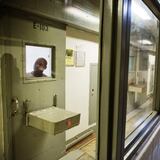As I enjoyed a series of neighborhood celebrations of America's independence on July 4, I kept thinking about a question that I had been asked earlier in the week on Facebook - it is a question that I have been asked more than any other in my over thirty years as a reporter in Washington, D.C., and it goes something like this: "Is the the most divided you have ever seen the United States?"
I've been watching politics since I was a kid. My father told me of how I kept track in the newspaper of the Chicago Seven trial. I watched the Watergate hearings when I should have been outside playing baseball. I've been reporting from D.C. since the Reagan Administration.
My answer is always - no, this is not the most divided that our country has been, even in my lifetime.
Yes, right now, during the administration of President Donald Trump, there are very loud voices on both sides. There are bitter exchanges on social media. The President has routinely denounced the news media, even labeling us the 'enemy' of the people.
Things were bitter in the Obama Administration. They weren't exactly calm in the Bush years. I remember people telling me it was the "worst ever" during Reagan in terms of partisanship.
It always seemed to be "worse" than before in the opinion of others.
But those assessments left me puzzled, because of what this country went through when I was young.
Just look at this photo montage that was put together with the old Crosby, Stills, Nash and Young song, "Ohio," about the four students killed by National Guard troops at Kent State University in 1970.
Are we at this point? Yes, we have protests - the most recent about the President's separation of illegal immigrant parents and children - but what's happening in 2018 is nowhere close to what was going on in the streets of America 45 to 50 years ago.
Maybe we will look back on this in a few years and see that I was wrong about this assessment - that maybe we are at a tipping point where the political differences start to rage in public as they did in the 1960's and early 1970's.
Or maybe we will look back and realize that our politics have often seemed fraught with division and peril, but that somehow, the United States continues to plunge forward, albeit at times on an uncertain course.
Yes, we have a lot of people marching and gathering. Yes, we have a lot of people voicing their satisfaction and dissatisfaction with the current President and his policies, both foreign and domestic.
But is this akin to the social upheaval of the late 1960's and early 1970's - the combination of the changes on Civil Rights, plus the firestorm over the Vietnam War?
Cities aren't burning. College campuses aren't rocked by violence. There aren't mass confrontations in the streets. There aren't signs hanging from college dormitories that read, "They Can't Kill Us All."
At my local Fourth of July neighborhood parade and park picnic, I was listening to the music that a singer/guitarist was playing for the crowd, listening for a message about where are right now.
A few years ago at the same event, a young woman belted out the lyrics from an old Janis Joplin song that caught my ear: "Freedom's just another word for nothin' left to lose."
This time, the singer went back for an old Buffalo Springfield song written by Stephen Stills, "For What It's Worth," which is maybe better known for the refrain, "Stop, children, what's that sound, everybody look what's going on."
Do we hear those type of protest songs today? Not from what I hear on the radio. Not from what I see in the streets.
Do I think this is the 'worst partisanship ever?' No. We started with the Federalists and anti-Federalists. And if you think that America has operated with one voice since 1776, you haven't read your history very well, especially in the halls of Congress.
In April of 1968 - fifty years ago - my father stood on the steps of the U.S. Capitol and watched neighborhoods burn in the riots that followed the assassination of Dr. Martin Luther King Jr., a spasm of violence that scarred sections of the city for decades.
Thankfully, we are not at that point in 2018.
Somehow, the United States of America finds a way forward.
I remain relentlessly optimistic about our country - though things can obviously get a bit messy.
About the Author


